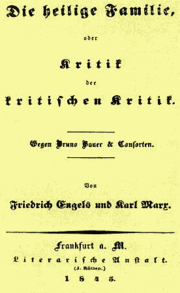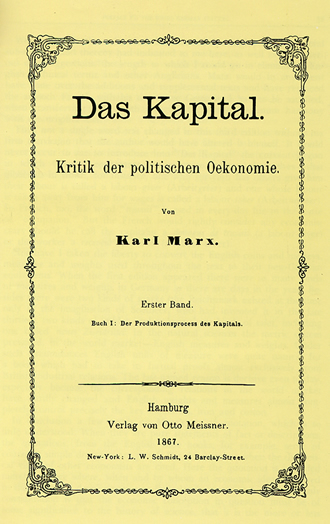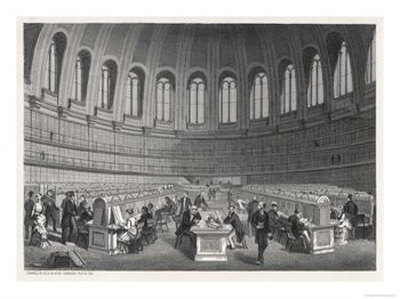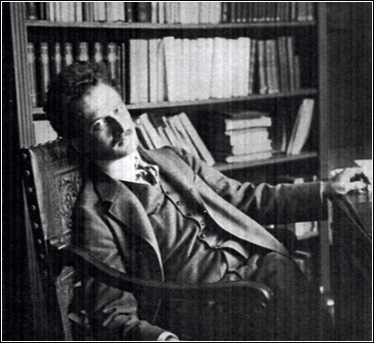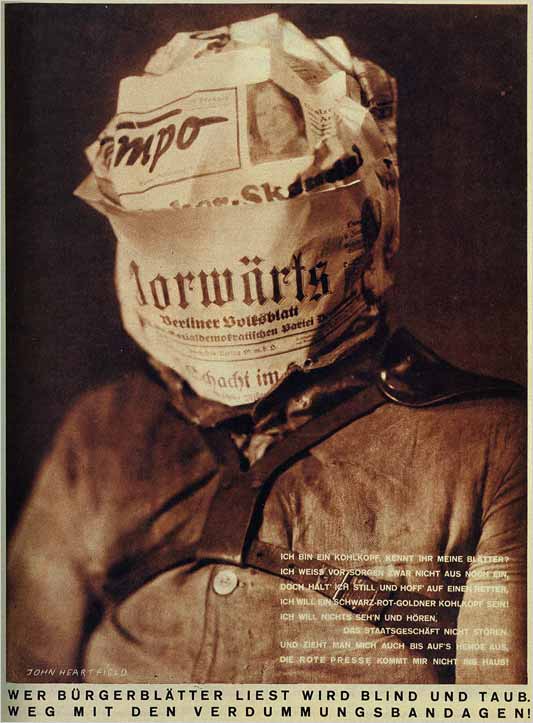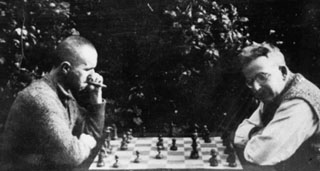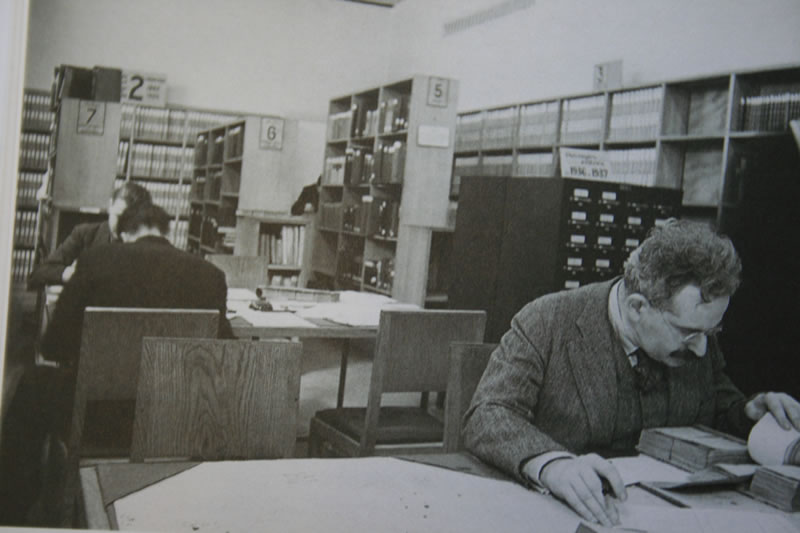GET YOU BACK HOME
BACK TO CRITICAL LITERALISM
WHAT IS DIALECTICAL CRITICISM?
A talk given in Vitoria-Gasteiz, at Peio Aguirre's Practical Criticism workshop, 20 May 2010
To begin let us think for a moment about what criticism meant for Marx. There is the book by Marx and Engels, The Holy Family, whose subtitle is ‘Critique of Critical Criticism’.
Critical Criticism was described by Marx and Engels as ‘speculative construction’ – that is to say, it describes what it thinks it sees, producing in the process a ‘disguised theology’, that is unable to penetrate through to the foundational mechanisms of what it condemns as wrong. It does not address the dynamic vested interests in the system of the world that produce antagonism. Critical criticism remains idealist, floating above what it analyses, however critical its stance might be.
However, it is notable that Marx uses the term critique to describe what he and Engels do to critical criticism. Whether an ironic or polemical gesture, criticism is central to Marx – but as the subtitle suggests, there is a further dialectical twist to be made as criticism must itself be subjected to critique: Critique of Critical Criticism.
Critique or Criticism (both words are the same in German - Kritik) also occurs in Marx’s key work Capital, which has the subtitle ‘critique of political economy’.
Critique has a force – even if it might be seen by some as an evasion of the command to act, a staling action of analysis and reflection. Marx claims, notoriously, in the ‘Theses on Feuerbach’ (1845):‘Philosophers have interpreted the world in various ways, the point however is to change it’. Interpretation, in the philosophical sense, is not, then apparently identical with critique. Critique is a stage on the way to changing the world – or, as later revolutionaries put it, practice must be informed by theory. Critique has real effect in the world – is a prelude or product of action.
Subsequent Marxists held on in various ways to Marx and Engels’ sense of critique or criticism. Perhaps all the more so as prospects of revolution receded. Marx’s Capital was written in a time of retrenchment, some twenty years after the heady days of 1848, when revolutionary fervour swept Europe and beyond. To write Capital’s critique of political economy Marx retreated in part from active political agitation into the British Library– a kind of holding operation of analysis in order to forward the cause intellectually, logically, ideologically.
In the years after the Russian revolution of 1917, the revolutionary wave began to spread and then faltered. In its wake, another period of critique in Marxism was inaugurated. Critique is often as much about an examination of Marxism’s own tenets as it is about the constituents of the surrounding world.
A work by Georg Lukács, which had a immense effect on a generation of European thinkers, disaffected bourgeois sons and daughters, sets the scene for this decisive turn towards critique in the Marxist tradition. After a serious study of Lenin, Lukács published History and Class Consciousness in 1923 and its most influential chapter was titled 'Reification and the Consciousness of the Proletariat'. Consciousness was forwarded as an entity worthy of analysis, of critique. The place where critique happens – the consciousness - becomes the site of critique, in a sense.
Lukács attempted to explain the discrepancy between class position and class-consciousness - which might be otherwise phrased as the question: why is the working class not revolutionary if revolution is in its interests. The orthodox Marxist reply blamed institutions of ideological production, such as the media, schools and the church, which spread misinformation, illusions or fear and so impeded the development of revolutionary consciousness. This is an Enlightenment notion of ideological manipulation, deception, delusion – a falsity need only be pointed out to be overcome.
Lukács approached the question a little differently – drawing on Marx’s concept of objective illusions – that is the notion that the false can be real, that the way things appear can be simultaneously true and false. Lukács examined the experience of workers under capitalism. He considered the ways in which labour power is turned into a commodity. Capitalists treat workers' wage labour as just another commodity to be bought and sold on the market. Workers then feel that they are individual atoms whose fate is dependent on a force, the market, over which they have no control. Workers' sense of their own powerlessness makes them susceptible to the commands issued by hierarchies and bureaucracies and the illusions of religion. This is a false perception, a delusion, but it is based on a real experience. It is an objective illusion. The false appearance is woven into reality itself. The misapprehension of the world is a real misapprehension. It is socially produced. Criticism plays the role of penetrating through the mists of subjective misidentification to expose the deeper motive forces that make the surface sense of things appear to be true.
But criticism is not enough – and the notion of objective illusion renders critique – or philosophy – redundant, in much the way Marx argued. If illusions are not a matter of cognition, a misperception perpetrated by ideology, then the philosophical critique of falsity is useless. The false appearance can only be altered in transforming the essence that produces the appearance – anything else is mere analysis, moral denunciation or ethics. Lukács ’ other key insight concerned the way in which the worker is an object of capital, but comes, through political enlightenment to understand that they are also a subject, an agent, whose withdrawal of labour causes a collapse of the whole system of reproduction.
The proletariat can adopt a point of view that sees the world from the perspective of an object of capital and a subject of history. This movement in and out of the true and the false, the appearance and the essence, the subject and the object: all this demands a dialectical approach.
Of those disaffected bourgeois sons who discovered Lukács, I wish to alight on Walter Benjamin, who read History and Class Consciousness, while in Ibiza in 1924. In the period following his encounter with Lukács, Benjamin defines his future career path as a critic. The combination of reading Lukács, discussions with communists such as Bloch and Alfred Sohn-Rethel and his experience of extreme economic crisis in Germany in 1923 and financial insecurities, pulled him towards what he called materialist criticism. In this period he begins to scrape together a living as a critic and journalist and radio presenter. His reviews and essays do not shy away from polemic, for he characterises his critical writing as sallies in an intellectual civil war. ‘Thirteen Theses against Snobs’ from 1925 notes: ‘The critic is a strategist in the literature battle.’
A spur to Benjamin’s interest in strategic criticism comes in 1929 in his meeting with Brecht, which leads to intensive work on the Brechtian aesthetic. To seriously wage the intellectual civil war against the many reactionary or incompetent fellow critics, it was deemed necessary to edit and publish a journal. Krisis und Kritik [Crisis and Criticism] was planned by Brecht and Benjamin in the autumn of 1930, drawing in left-wing figures such as Lukács, Adorno, Marcuse and others. Its character was political, ‘standing on the ground of class struggle’, and ‘its critical activity anchored in clear consciousness of the basic critical situation of contemporary society’. The many forms of crisis – social, economic, political – were ever more manifest and become part of the context of the act of criticism. The journal was not conceived as an ‘organ of the proletariat’, but rather it would ‘occupy the hitherto empty place of a organ in which the bourgeois intelligentsia renders its account of the demands and insights, which alone allow it under current conditions to produce in an interventionist manner and with consequences, as opposed to the usual arbitrary and inconsequential modes.’ The journal never appeared. In that same period Benjamin writes a kind of manifesto titled ‘Programme for Literary Criticism’. It contains forty theses. Number 16: ‘The function of criticism, especially today: to lift the mask of “pure art” and show that there is no neutral ground for art. Materialist criticism as an instrument for this.’ Benjamin treats artworks as bundles of symptoms and these are not just to be approached affirmatively, in statements such as ‘this captures well’, ‘this expresses perfectly’– he talks of bringing out the importance of something seemingly peripheral through ‘negative criticism’ – which we might imagine as something like – the insistence on this format indicates the anxiety about the coming of new technical and social modes of conveying culture. Benjamin writes of more or less ‘deeply hidden tendencies’ served by artworks that must become points of exposure: again a sense of revealing what is in the artwork itself, must be brought to light and understood as tendentious, partisan, just as the critic’s interest in it is partisan.
The notion of strategy comes at various points: in the fragment ‘The Task of the Critic’ from 1931 Benjamin notes twice that there is such a thing as strategic criticism, and it appears to be concerned with a critic revealing not his or her own opinions about something, but the standpoint that they themselves possess. Benjamin emphasizes partisanship, taking a position and making that position explicit. The critic does something else to the text other than judging. Another fragment from 1931 reiterates that a critic is not there to ‘pass judgment’ or have an opinion, but rather to trace out something in the work itself, the work that, once explained by the critic, that is, in other words, revealed as what it already is, becomes a repository of what Benjamin terms ‘truth contents’ and ‘social content’. It reiterates, in another way, that insight from Lukács and Marx: that the given is both true and not true. It is a real abstraction, an objective illusion. The text samples reality, its illusions as well as its motive forces. This can all be unpacked, brought out to the light. This is why Benjamin puts so much store by ‘quotation’ in book criticism, envisaging a review comprised entirely of quotation – it avoids the boredom of summary and gives over the matter of the text itself. The work contains the elements of its own critique. It is not extraneous matter, as such, that criticism introduces – it discovers the context in the text. It is the critic’s work of unpacking that is of interest – a quotation being like an item lifted from a suitcase. From this perspective, the artwork as such can be seen as just a temporary stage. He writes: ‘On the point that criticism is internal to the work: in the case of great works, art is merely a transitional stage. They were something else (in the course of their gestation) and become something else again (in the state of criticism).’ What interests Benjamin is always fundamentally dialectical. The artwork is in the world and of the world. Its author is in and of the world. The critic is in and of the world and between all these instances there are dialectical relays.
It would be banal to undertake a criticism solely based on the positivistic approach which stated that the author is of this class, therefore the work is a manifestation of that, simply. But this is what some of the orthodox Marxists and Stalinists thought passed for criticism. The Nazis, for their part, outlawed criticism in favour of ‘art appreciation’, but likewise their art appreciators also positivistically and undialectically made the claim that ethnic origin or mental and political disposition of the author was the only key to understanding the meaning of the work. This approach, of course, excludes the idea of partisanship, of adopting a stance, a standpoint.
Benjamin is insistent that the old critical categories are no longer relevant – he names these later, in his essay on the work of art in the age of its technical reproducibility, as creativity, genius, eternal value and mystery. In contrast, he writes, ‘what is required now is a detour through materialist aesthetics, which would situate books in the context of their age. Such criticism would lead to a new, dynamic, dialectical aesthetics’. Artworks draw off the world and time of their being made and it is this relevance that brings them to the fore or not. Benjamin reflects on this in his ‘Programme for Literary Criticism’, noting how, in the case of the war memoirs, at the moment of their making, there was no appetite for them. They were too objective, documentary in style, and the taste of the time, the time of inflation, was for inflationary, excessive, meandering works, the works of Expressionism. But, notes Benjamin in an extraordinary feat of economic determinism of meaning, after Expression came New Objectivity. Benjamin posits Expressionism as the extended borrowings of metaphysics, cosmic claims, excessive overdraughts of reality and New Objectivity as the consolidation of the debt, the interest incurred and now paid back, locking the world into the Real of money, the adherence to the very worldly Dawes Plan. In this act of critical apprehension, Benjamin situates the work in the context of its age, but he also includes the possibility of an out-of-timeness, that is, of a work that anticipates what is to come or comes too late to be meaningful in its own terms.
One thesis in the ‘Programme for Literary Criticism’ states: ‘What is crucial about any critical activity is whether it is based on a concrete sketch (strategic plan) that has its own logic and its own integrity’. What Benjamin means is, is there a coincidence between critical and political strategies. It is this idea of coincident strategies that is continued in relation to the artwork in his essay from 1934, ‘The Author as Producer’. It was conceived as lecture at the Institute for the Study of Fascism. A counterpart to his work on Brecht’s epic theatre, it noted those forces – Brecht, the Soviet writer and critic Tretyakov – who altered the forms of art such that revolutionary authors became ‘engineers’ of a production apparatus, rather than suppliers. This apparatus was then used by its public, rather than consumed. It was not a question of art expressing revolutionary themes, but rather an effort to persuade revolutionary authors that formal questions of production and reception were the crucial political questions.
He examined strategies that would avoid the pressures on artists to be individualistic, competitive or promoters of art as a new religion or an evasion of the ‘political’. He evaluated artists’ efforts to work out cultural forms that could not be recuperated by fascism or its underlying system, capitalism. He assessed what the new mass cultural forms that existed – radio, film, photography, photomontage, worker-correspondent newspapers - meant in the wider scheme of the social world, and how facts such as mass reproduction change humans’ relationship to culture of the past and the present. Benjamin’s notion is that cultural production adopt the character of a model, that it place an ‘improved apparatus’ at the disposal of authors and audience, bringing audiences into contact with the production process, turning readers or spectators into collaborators. Each cultural manifestation has a condition that is already political. Benjamin directs a series of questions at artists who would further revolution: Do they succeed in promoting the socialization of the intellectual means of production? Do they have recommendations for the re-functioning of the novel, the drama and the poem, music and photography? Have they made of readers authors, of authors engineers? Have they fused and recast forms and audiences alike? Behind all of this stands the key question: how does a cultural work ‘stand in the relations of production of a period?’ Where is inequality, how is it policed and reinforced? And how do these conditions, that we all already bear, affect, allow, deny access to cultural goods?
There exists for Benjamin a model: Brecht. In Brechtian drama, which takes place on a platform, a political arena, not a stage, an art one, actors and public achieve a new relationship, and one that incorporates criticism and self-criticism. Criticism is taken up into the artwork. For one, the interruptions of montage counteract the illusion of a completed reality that can be passively consumed and complacently acknowledged by audiences. Passive consumption is seen to be the mode of reception effected by naturalist theatrical mechanisms. Brecht’s aesthetic system, in contrast, conveys the conditions that we are already in, but allows these to be actively ‘discovered’, made recognisable and ready for reconstitution in the perplexing moment of their estrangement. Benjamin writes, as he says, ‘in the light of the technical conditions of our current situation’.
Benjamin’s understanding of criticism, at this point, has become a kind of political intervention. It comprises an analysis of what artists – or producers – do; how what they do expresses – or not – their times; how what they do uses or evades the technologies that have become ubiquitous in everyday life and put their own pressures on perception and apperception.
Benjamin’s writings of the 1930s are as much as anything else activities designed to generate income, justify a small stipendium from the Institute for Social Research, headed by Max Horkheimer and intellectually overseen by Adorno.. Criticism is a key term for the Institute for Social Research. It developed a mode of criticism and analysis called Critical Theory.
What is critical theory? What distinguishes Adorno’s thinking, or Horkheimer’s and the rest from theory per se, or what they termed ‘traditional theory’? What does it mean to be critical? The critical moment is, precisely, the moment of the splinter, the shattering. Critical is derived, of course, from crisis. It is defined as a turning point, an interruption, a change in quality. This sense is most explicit when it is used in chemistry or physics: where it relates to the value of a measurement, such as temperature, at which an abrupt change in a quality, property, or state occurs. The critical moment proposes a before and after or a wavering on the cusp of those two moments. And what about ‘theory’? As Heidegger notes, the Greek word theorein, which means speculation, derives from the word for spectator, theoros, which is drawn from thea, a view and horao, to see. ‘Critical theory’, in these above senses, in relation to seeing or the view and in relation to turning points or interruption, is formalised methodologically in Benjamin’s writings in the various notions of ‘dialectical imagery’ or ‘dialectics at a standstill’. Benjamin’s concepts propose a method of both describing (seeing) and analysing (criticising or interrupting) his objects of analysis. The dialectical aspect relates to movement, history, the flow of time and change. The other moment, be it image or standstill, arrests what is to be analysed. The dialectical image is frozen, in order to detect its animating forces. Dialectics at a standstill similarly forces to a halt the onward flow of history or progress, allowing a concentrated focus, or, better, an estranged focus on what is taken to be the ineluctable flow of everydayness. Brecht’s dramatics demonstrate for Benjamin both the valuing of flux and ceaseless change and also epic theatre’s idea of breaking-up the flow, of interruption, slicing the narrative into scenes and the scenes into Gestus, or critical moments, turning points. The horror version of dialectics at a standstill is historical stasis, petrifaction, in that which should be mobile, in flux. That immobilizing spell is broken in a kind of image therapy, which presents in one image or in a montage of images, both the forces of oppression – the flaw of the world – and the possibility of error’s supersession – the redemption of reality. Analysis has its shattering aspect, for it too means to ‘break up’, ‘unravel’ or ‘loosen’. History, the passing of all things, and agency, the decisive moment of force, are preserved in Brecht’s and Benjamin’s method. If the two aspects are brought together, revolution is a prospect. In splintering representations – by analysis – the possibility springs up of worldly reconstitution under new laws.
I want to turn now to Adorno, also a critical theorist, who developed his own version of dialectical criticism. In 1949, just before Adorno returned from his exile home in the USA to Germany, he wrote an essay titled ‘Cultural Criticism and Society’. Here is discussed criticism as something that had effectively disappeared, had become advertising or propaganda. Cultural criticism has become, he insists, a form of ideology brokering - rather than a practice that relates to truth. The essay explains why and how to remedy the situation. The starting point is not that the critic has no feeling for culture, but rather the opposite. The critic believes in culture too much, in the sense of severing it off from the rest of life, making culture a specialism, a good place, as opposed to the rest of life that is not culture. While such a procedure appears to be an overvaluation of culture, in fact it turns out to allow more fully the commodification of culture. Culture is a special uniqueness that it completely other to the rest of life, a luxury good. The critic is the broker of this specialty good, with the power to elect the successful – and as such has set himself or herself up as an expert, a cut above the masses, who the critic condemns as too enamoured of the mass commodity, undiscerning. All of culture is segmented into market niches – high and low and each defines itself against the other, which becomes the main area of focus for the critic, and yet each are alike part of the same economic world. Critics and society find solace in the idea that there is high and popular culture. But Adorno, from his perspective that there is a totality, indicates an originary guilt in culture. Its production and its enjoyment are conceived as forms of mental labour that relies on the division of society into mental and manual. It is the luxury on top that depends on labour below, somewhere along the line. Adorno writes: 'It ekes out its existence only by virtue of injustice already perpetrated in the sphere of production, much as does commerce'. Culture relies on the division of labour. All culture is guilty – not just commercial culture (as cultural critics charge).
Peculiar to high culture is that it presents itself as ‘free’, unlike mass culture that must be a slave to mass taste, and is openly bought and consumed. In being ‘free’ apparently – Adorno is thinking of radio concerts or artworks in galleries – it becomes a kind of advertisement for the system as is – which is so good that it provides culture for free, moreover a culture that floats above such mucky concerns as economic accumulation and work (the base truths of the system). The semblance of freedom makes reflection on unfreedom more difficult. Apparent liberation of thought is a false emancipation (which is in slavery to economic exchange). Both artwork and critic are placed outside society or above it - in order to judge, but this is impossible. A motto from Adorno: 'Whenever cultural criticism complains of “materialism”, it furthers the belief that the sin lies in man's desire for consumer goods, and not in the organisation of the whole which withholds these goods from man'. The critic has to understand his or her role as bound up in the needs and machinations of society. That is to say, that even a notion of having a spontaneous relationship to the object – to approach art without predetermination, and without motive - is impossible, because the critic is pressurised by the weight of the existing social world to judge in line with prevailing opinion. Where once feudal authority dictated, now the anonymous sway of the status quo compels. And yet, notes Adorno, culture is double-marked: on the one hand, culture is a product of unbearable division, On the other hand it still holds open a promise of autonomy, of something other than labour and commerce. Its lie is also its truth. Few cultural critics can understand this. As Jay Bernstein puts it succinctly: ‘High culture exists because what it promises does not’.
In this essay, Adorno endeavours to establish a criticism worthy of the name. Transcendent criticism sees the critic adopting a stance outside society and looking down on culture through a specific lens, say Marxism, the position to which the critic ascribes. It smashes this position up against the cultural form that becomes, then, only another exemplar of the miserable system, which the transcendent critic rejects in its entirety. Culture becomes just an ideological fiction supporting society and the transcendent critic wishes only to abolish it. Adorno notes: ‘In wishing to wipe away the whole as with a sponge, transcendent critique develops an affinity to barbarism’.
Immanent criticism, in contrast, pays close attention to the particularities of the object. It does not assume that the world of the object is untrue – only that it may present a truth to the world as if it were instantiated in reality. To this extent, Adorno sees that immanent criticism has merits. It can reveal the falsity of the world through culture’s claims –most abstractly phrased claims – to freedom, autonomy. It shows the discrepancy between what the work says, in its meaning and structure, and what the world gives. The work of art is revealed through close analysis as contradictory parts.
Neither of these critical strategies are sufficient. Both together must be mobilised in what Adorno calls ‘dialectical criticism’. Each criticism becomes a critique of the other. The whole is perceived from the outside by a critic wielding a transcendent critical position. At the same time, the possibility of a ‘pure’ position outside is undermined. The work is considered closely in all its particularities, taken on its own terms as proposing a world, which may or may not bear resemblance to an external world from which it distances itself. Its internal articulation must be traced out to fully understand all its parts and how these parts express in relation to each other and to the context. This mimetic tracing echoes Benjamin’s idea of the quotation – the artwork is its own critique. At the same time, this discrepancy between the work’s and the world’s promises is highlighted, read against a social whole that denies fulfilment of the promise. Reflective distance must be taken from the work, in order to bring another set of principles, standpoints to bear on it. This too echoes Benjamin’s sense that the perspective of the critic must be made obvious. In summary, there must be an outside to the artwork, but the outside is already inside the artwork. Dialectical criticism argues that there is no Archimedes point from which the whole can be surveyed – the dialectical moment means that he does not perceive existing reality as fixed, closed, a completely identical unity, but as a conflict between opposing forces that marks itself on the artwork. These opposing forces are subject and object, nature and history, content and form, individual and society, thought and reality, culture and barbarism, as well as capital and labour.
I want to finish with some reflections on contemporary criticism in the light of these preceding thoughts.
Criticism today is fairly shabby. Much of it is either transcendent or immanent in the weak sense. Art journals and art journalism waste lots of ink on description – and, of course, it is easy to see where the business of promotion, censorship, marketing fits in with this. Even journals that might think themselves uninvolved in this type of work spend time on description – a kind of weak immanentism – elaborating in words what might be seen in a gallery, or recounting plots of books and films. Art is reduced to entertainment. And also marketing – the press release rehashed as critique or simply advertisement. From one debased language is made two. In other places, on the Left, for example, all is simply transcendent, in the crassest sense. Just as the Orthodox Marxist have long done, judgment is made not of the work and the contradictions that it might embody in its form or in its content, but rather of the authors’ class passport or the explicit manifest content on the surface. Prizes are awarded to the work or the art worker who affirms the transcendent set of values held by the reviewer. Art criticism is affirmation of art, including the affirmation of art that is negative, that is critique.
Of the contemporary more or less celebrated cultural critics Fredric Jameson is the one who most adopts Adorno’s mantle of dialectical criticism, and quite self-consciously. Though he does it without any of the acid that Adorno’s bitter prose conveys, even if he would make such claims, as in the 1971 essay ‘Towards Dialectical Criticism’: ‘thought asphyxiates in our culture with its absolute inability to imagine anything other than what is. It therefore falls to literary criticism to continue to compare the inside and the outside, existence and history, to continue to pass judgment on the abstract quality of life in the present, and to keep alive the idea of a concrete future. May it prove equal to the task!’
And he, in a sense, out-dialecticises Adorno to the extent that the criticism he exercises becomes quite diffuse, or even confused. Even that title ‘towards dialectical criticism’ is too much – dialectics is itself only a towards, a referring back and forth, an unfixed proposition, a momentary claim. Jameson’s is more than most a dialectic without synthesis and has fallen more recently, in his Archaeologies of the Future and in Valences of the Future, into a ‘utopology’ in which, for example, the American superstore chain can be both dystopian and utopian, depending on how you look at it, just by an act of imagination, by a revealing of the wish that is manifest in the form. Jameson thinks ‘the negative and the positive together at one and the same time’. He writes: 'to apprehend it for a moment in positive or progressive terms is to open up the current system in the direction of something else'. Failure can become success – but how, only if the critic says so, only if we want it to be?
But Jameson does give us a useful outline of the movement of the dialectic, which returns us to Marx and Lukács and everything I started with and which I think is of the essence (literally) for comprehending ‘dialectical criticism’ in any and all of its forms. Jameson is describing the ‘tripartite movement of the Hegelian dialectic’, which is the one that all subsequent dialecticians adopt:
stupid first impression as the appearance, ingenious correction in the name of some underlying reality or ‘essence'; but finally, after all, a return to the reality of the appearance.
In relation to capitalism this might mean the following. A stupid first impression: capitalism is the product of all humans making efforts. The ingenious correction: capitalism escapes human agency, is a great machine of abstraction. The return to the reality of the appearance: capitalism is indeed made by humans, but specific humans, the workers, perform specific types of work that keeps the system reproducing itself in the way it has currently adopted historically. Should we recognise this we might change it. Art might be a place in which that recognition can crystallise.
I wish to do one final thing. To consider Benjamin’s dialectical criticism and Jameson’s dialectical criticism through the lens of dialectical criticism in Adorno’s sense. Considered transcendently, from the outside, dissolved into its context Benjamin’s is work written for money, for he has no academic position, is insecure, precarious – despite this his work is not, in the main, hackish. This circumstance of instability determines its form and contents and both provokes and circumscribes the standpoints presented within. It is work in tension with the world and strains to find places to place its opinions. Seen immanently, we might notice how it is marked by the sharp stabs of the capitalist system, its rhythms and demands, its modern speediness and engagement with fashion and the popular. It takes up its exposure to capitalism into itself, by hardening its position against the system, condemning it polemically and totally and making divisions between its insights and those of conformist critics. Benjamin’s short punctuated rhythms and polemical outbursts take up the confident mode of address of the media and its competition for distracted attention. It is timely, always valuing the contemporary and concerned with the precise moment into which a statement is uttered (which can include polemical returns of long forgotten materials, that flash back into his critical view in a certain moment – hence Benjamin’s excavations of Baudelaire’s lyric some seventy years after its writing, in order to see what poetry from the epoch of high capitalism exposes about poetry in the next phase of capitalist organisation). Benjamin’s procedure encapsulates something of Brecht’s impatience with laborious, convoluted and super-subtle analysis, epitomised in the dialogue Benjamin reports between a caption on Brecht’s ceiling beam and a placard hanging around the neck of his toy donkey: ‘Truth is concrete. I, too, must understand it’.
Jameson produces a different type of criticism. It is leisurely, expansive, full of curlicues and endless twiddles. It is the work of someone with much time on their hands – a tenured and well-remunerated position – who can reflect upon the complexities of the system, and is not pressed into selling words for money – despite the vast quantities of these produced. Its attitude is mournful, contemplative and sometimes resigned. It ranges over all the world’s contents, looking at them this way and that, poking them over hundreds of pages to tease out their contradictions. Jameson appears to be writing a novel about capitalism, has the ambition to cover the whole world and all its contents in his endless books that include reprints of work now thirty years old, but not acknowledged as such, not updated. It leads to a peculiar timelessness for that work that would be about the urgent questions of our times. Jameson slips into science fiction styles at points, to press home his point about the death of imagination in mainstream literature and culture, high and low. It is now scuttled away to reside only in strange corners of genre fiction built on imagining probable impossibilities.
Both Benjamin and Jameson produce an image of the world and values about that world by the form and content of their critical work. Both express a wish for an other type of ordering. Their criticism expresses a desire for another world, is impelled by that desire. Even if they do this quite differently. Both find an appropriate form to express criticism of culture and, through that, criticism of the world as well as affirmative of tendencies in the present that provide resources for hope. Both redeem, in their own ways, the bad present through the critical act of reflecting through what is on what might be and must be – and that is dialectical criticism.
